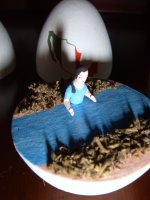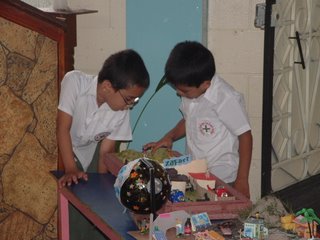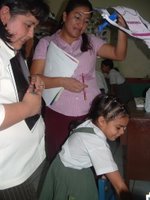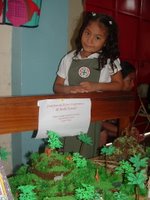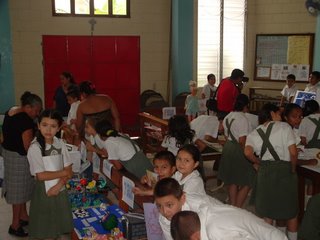When the People Leave
 Clay artisans from Ilobasco have created a series of "sorpresas" surprises, illustrating the journey north
Clay artisans from Ilobasco have created a series of "sorpresas" surprises, illustrating the journey north
“If she leaves, she won’t ever come back,” lamented the young woman’s mother-in-law in low tones to a neighbor after a home bible study. The young woman in question is twenty-three, and is thinking of traveling to the United States with a “coyote” (trafficker in illegal immigration) to find work. She and her husband are fortunate enough to both have jobs in El Salvador, but they make so little that they are now unable to make the payments on their small house (“really it’s a shack,” commented her mother-in-law). Energy prices have more than doubled recently, rising global energy prices being compounded in El Salvador by the simultaneous removal of government subsidies. “I am a penny-pincher,” a woman who lives next to the church told me. “I turn off all the lights we’re not using, and unplug everything except the refrigerator. My bill used to be $8 a month, and now it’s $22.” The recent increase in minimum wage (though most people actually make below minimum wage), from US $160 a month to $170 a month, doesn’t even cover the increase in the electric bill.
young woman in question is twenty-three, and is thinking of traveling to the United States with a “coyote” (trafficker in illegal immigration) to find work. She and her husband are fortunate enough to both have jobs in El Salvador, but they make so little that they are now unable to make the payments on their small house (“really it’s a shack,” commented her mother-in-law). Energy prices have more than doubled recently, rising global energy prices being compounded in El Salvador by the simultaneous removal of government subsidies. “I am a penny-pincher,” a woman who lives next to the church told me. “I turn off all the lights we’re not using, and unplug everything except the refrigerator. My bill used to be $8 a month, and now it’s $22.” The recent increase in minimum wage (though most people actually make below minimum wage), from US $160 a month to $170 a month, doesn’t even cover the increase in the electric bill.
Immigrants from Central America face more dangers traveling by land to the United States than those from Mexico, because of the additional length of their journey, and because they face abuse by the Mexican police if caught. People who immigrate with coyotes often spend their first few years in the US, if they are lucky enough to “pass” and find work, paying off the loans they took out to pay the coyote, whose fees for Central American immigrants range from $5,000 to $10,000 per person. Coyotes do not give refunds if migrants are caught and returned. And those who opt to travel alone face even greater risks, not only of getting caught, but of death or dismemberment from trains, crossing rivers, or in the desert.
This is not a journey people undertake lightly, in order to flaunt the laws of the United States, o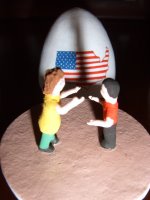 r to steal from its people. People take on the enormous risks of an undocumented journey to the US simply because of economic need, and because the “sueño Americano¨ (American dream) is so effectively sold by the international media and the mall-builders in Latin America. Who wouldn’t rather work at a job that would enable them to afford a designer T-shirt rather than sewing those T-shirts together for $5 a day?
r to steal from its people. People take on the enormous risks of an undocumented journey to the US simply because of economic need, and because the “sueño Americano¨ (American dream) is so effectively sold by the international media and the mall-builders in Latin America. Who wouldn’t rather work at a job that would enable them to afford a designer T-shirt rather than sewing those T-shirts together for $5 a day?
To me the most tragic effect of migration is the breaking apart of families. The 23-year-old woman, if she migrates, will not see her five-year-old son or her husband for years, if she sees them again at all. There are numerous children in our school who have one or both parents in the US (one small boy is now the only member of his immediate family still in El Salvador); their struggles and sense of abandonment show up in their academic difficulties and behavioral acting-out.
The Church does not promote or encourage illegal immigration. Bishop Barahona has been instrumental in founding two migration-related organizations: one non-profit that helps people seek legal means to immigrate to the US, and another which helps deportees re-integrate into life in El Salvador. We try to educate people about the risks of going, and encourage young people to seek higher education in order to get ahead and make a contribution to bettering the situation in their home country. But when people have made up their mind, there is little more we can do. I give them a cross or a small bible, a pamphlet on the human rights of migrants, pray with them for their safety and for their family. I pray that our migrant Savior, who was a refugee in Egypt, may go with them on their way.
